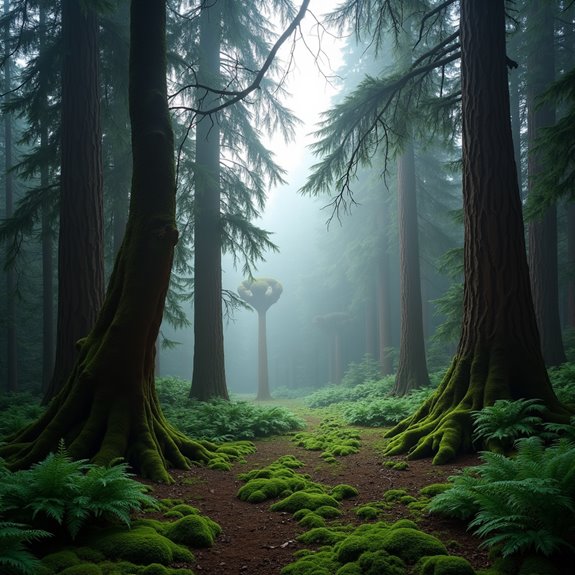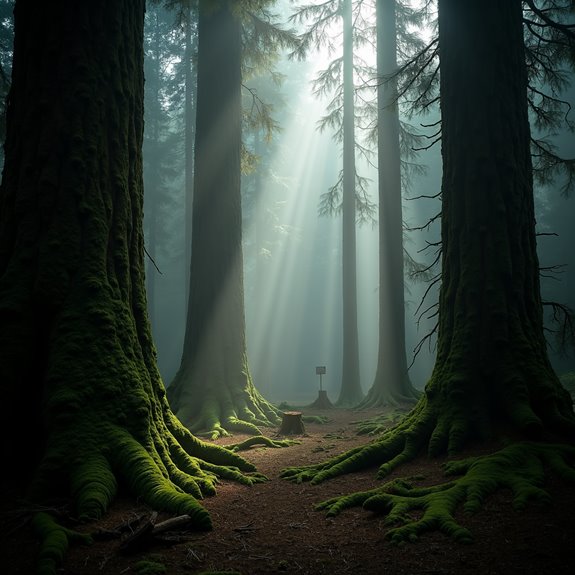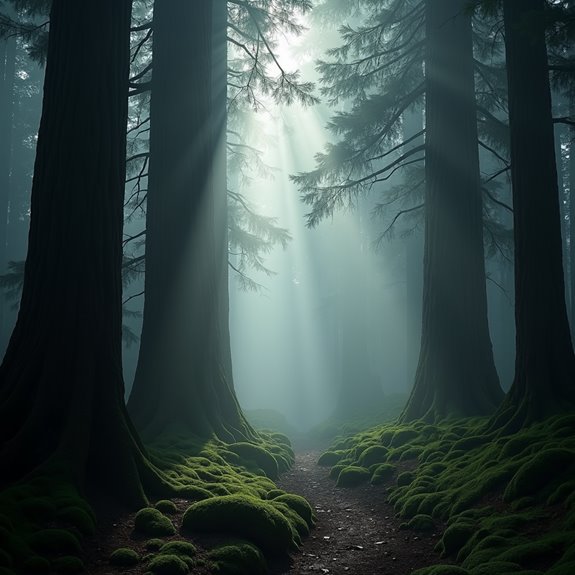Are the Trees of the Pacific Northwest Whispering Warnings?
The trees of the Pacific Northwest stand as silent sentinels, embodying the delicate balance of nature. As ancient giants, they reveal stories of resilience and warning through their rings and bark. With climate change looming and habitat loss increasing, one has to wonder if these majestic beings are trying to communicate. What messages do they hold, and how can understanding them lead to meaningful conservation efforts? The answers might be more urgent than one thinks.
Introduction

The Pacific Northwest is renowned for its lush, diverse forests, where towering trees create a striking landscape that captures the essence of the region. Dominated by species like Douglas fir, cedar, and spruce, these forests support a rich ecosystem teeming with wildlife. The varied climate fosters a symbiotic relationship between trees and their environment, with each species playing an essential role in maintaining the ecological balance. As seasons change, the forests shift, showcasing vibrant colors and inviting visitors to appreciate their majesty. However, beneath this beauty lies a growing concern about the health of these crucial habitats. The whispers of trees may carry warnings, urging humanity to pay attention to the delicate balance that sustains this treasure of nature.
Forest Conservation Efforts History

Growing awareness of environmental issues has prompted significant forest conservation efforts in the Pacific Northwest over the decades. In the early 20th century, the establishment of national forests marked a turning point, as communities recognized the need to protect essential ecosystems. The creation of the U.S. Forest Service in 1905 further emphasized sustainable management practices. By the 1970s, movements advocating for the protection of old-growth forests gained momentum, leading to legislation like the Northwest Forest Plan. Nonprofit organizations have played an indispensable role, rallying public support and raising funds for conservation initiatives. Over time, these efforts have evolved, balancing ecological health with economic interests, reflecting a broader appreciation for the region’s unique natural heritage and the urgency of preserving it for future generations.
Notable Cases or Sightings

Numerous notable cases of tree sightings in the Pacific Northwest highlight the region’s rich biodiversity and the unique species that thrive within its forests. In 2018, a hiker stumbled upon a rare species of mushroom growing on an ancient Douglas fir, leading researchers to explore the tree’s age, revealing it was over 1,000 years old. In another instance, a community project documented a colossal western red cedar, regarded as one of the largest of its kind. Additionally, local naturalists frequently report sightings of the endangered old-growth Sitka spruce trees, drawing attention to their ecological importance. These cases showcase not only the remarkable trees but also the urgency of conservation efforts to protect these living landmarks essential to the region’s ecosystem.
Common Theories or Explanations
Why do some trees in the Pacific Northwest become remarkable landmarks while others fade into obscurity? Various theories attempt to explain this phenomenon. One common theory posits that unique environmental conditions play an essential role; factors like soil quality, moisture levels, and sunlight exposure can greatly influence a tree’s growth and longevity. Another explanation focuses on historical significance; some trees served as crucial navigation points for Indigenous peoples or were connected to notable events, embedding them in cultural memories. Additionally, the concept of charisma suggests that the tree’s size, shape, or unusual species can captivate human attention. Ultimately, a combination of environment, history, and distinctiveness determines which trees leave a lasting impression on the landscape.
Frequently Asked Questions
Do Trees Communicate Warnings to Each Other?
Researchers believe trees do communicate warnings to each other through underground networks and airborne chemicals. They share information about pests and environmental threats, helping neighboring trees respond more effectively to potential dangers in their vicinity.
How Do Environmental Factors Affect Tree Behavior?
Environmental factors shape tree behavior considerably. They respond to drought, soil quality, and temperature changes, adjusting growth strategies accordingly. Trees might develop deeper roots or alter leaf structures, ensuring survival amidst shifting conditions in their ecosystems.
Are Certain Tree Species More Sensitive to Disturbances?
Certain tree species exhibit heightened sensitivity to disturbances, adapting rapidly to environmental changes. Factors like moisture levels, soil health, and temperature variations influence their resilience, ultimately determining how effectively they cope with stressors in their habitat.
What Role Do Fungi Play in Tree Communication?
Fungi play an essential role in tree communication, facilitating the exchange of nutrients and information. Through their vast networks, they help trees warn each other about threats, enhancing the overall health and resilience of forest ecosystems.
Can Trees Detect Changes in the Environment Before Humans?
Researchers believe trees can detect environmental changes quicker than humans. Their roots and leaves respond to alterations in soil moisture and air quality, enabling them to adapt, signaling shifts in their ecosystems before people notice.


